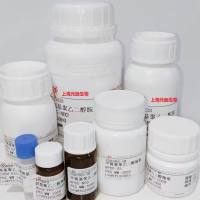Methoxyoxalamido Chemistry in the Synthesis of Tethered Phosphoramidites and Functionalized Oligonucleotides
互联网
- Abstract
- Table of Contents
- Materials
- Figures
- Literature Cited
Abstract
A general approach to phosphoramidites tethered with single and multiple linkers through the use of methoxyoxalamido (MOX) chemistry is described. The approach utilizes readily available and inexpensive primary aliphatic amino alcohols and diamines to produce a rich and diverse variety of tethered phosphoramidites. Furthermore, the use of MOX chemistry in a modular fashion enables fairly rapid assembly of compound tethers. All novel phosphoramidites described have been successfully used in automated syntheses of 5??modified oligonucleotides.
Keywords: methoxyoxalamido (MOX) chemistry; tethered phosphoramidites; 5??modified oligonucleotides
Table of Contents
- Basic Protocol 1: Preparation of Phosphoramidites Tethered with Single Linkers
- Alternate Protocol 1: Preparation of Phosphoramidites Tethered with Multiple Linkers
- Basic Protocol 2: Synthesis, Deprotection, and Purification of Oligonucleotides Derivatized with Tethered Phosphoramidites
- Commentary
- Literature Cited
- Figures
- Tables
Materials
Basic Protocol 1: Preparation of Phosphoramidites Tethered with Single Linkers
Materials
Alternate Protocol 1: Preparation of Phosphoramidites Tethered with Multiple Linkers
Materials
|
Figures
-
Figure 4.29.1 Synthetic pathway for phosphoramidites tethered with a single linker. MOX, methoxyoxalamido; DMTr, dimethoxytrityl; MMTr, monomethoxytrityl. View Image -
Figure 4.29.2 Synthetic pathway to phosphoramidites tethered with multiple linkers. MOX, methoxyoxalamido; DMTr, dimethoxytrityl; MMTr, monomethoxytrityl; n = number of cycles. View Image -
Figure 4.29.3 Initial MOX precursors. View Image -
Figure 4.29.4 Phosphoramidites and precursors with simple or multiple aminated linkers. MMTr, monomethoxytrityl. View Image -
Figure 4.29.5 Phosphoramidites and precursors with simple or multiple hydroxylated linkers. DMTr, dimethoxytrityl. View Image -
Figure 4.29.6 PAGE analysis of crude 5′‐modified T10 oligonucleotides. Lane 1 of each gel corresponds to the unmodified T10 oligonucleotide. The other lanes correspond to oligonucleotides modified at the 5′ terminus with the following phosphoramidites: S.3d (A2), S.4d (A3), S.5d (A4), S.6d (A5), S.8d (A6), S.7d (A7), S.9d (A8), S.10d (B2), S.11d (B3), S.13d (B4), S.12d (B5), S.14d (B6). View Image
Videos
Literature Cited
| Literature Cited | |
| Bannwarth, W. 1988. Solid phase synthesis of oligonucleotides containing phosphoramidate internucleotide linkages and their specific chemical cleavage. Helv. Chim. Acta 71:1517‐1527. | |
| Jaschke, A., Furste, J.P., Nordhoff, E., Hillenkamp, F., Cech, D., and Erdmann, V.A. 1994. Synthesis and properties of oligodeoxyribonucleotide‐polyethylene glycol conjugates. Nucl. Acids Res. 22:4810‐4817. | |
| Polushin, N.N. 2000. The precursor strategy: Terminus methoxyoxalamido modifiers for single and multiple functionalization of oligodeoxyribonucleotides. Nucl. Acids Res. 28:3125‐3133. | |
| Polushin, N.N., Morocho, A.M., Chen, B.C., and Cohen, J.S. 1994. On the rapid deprotection of synthetic oligonucleotides and analogs. Nucl. Acids Res. 22:639‐645. | |
| Reddy, M.P., Hanna, N.B., and Farooqui, F. 1994. Fast cleavage and deprotection of oligonucleotides. Tetrahedron Lett. 35:4311‐4314. |








